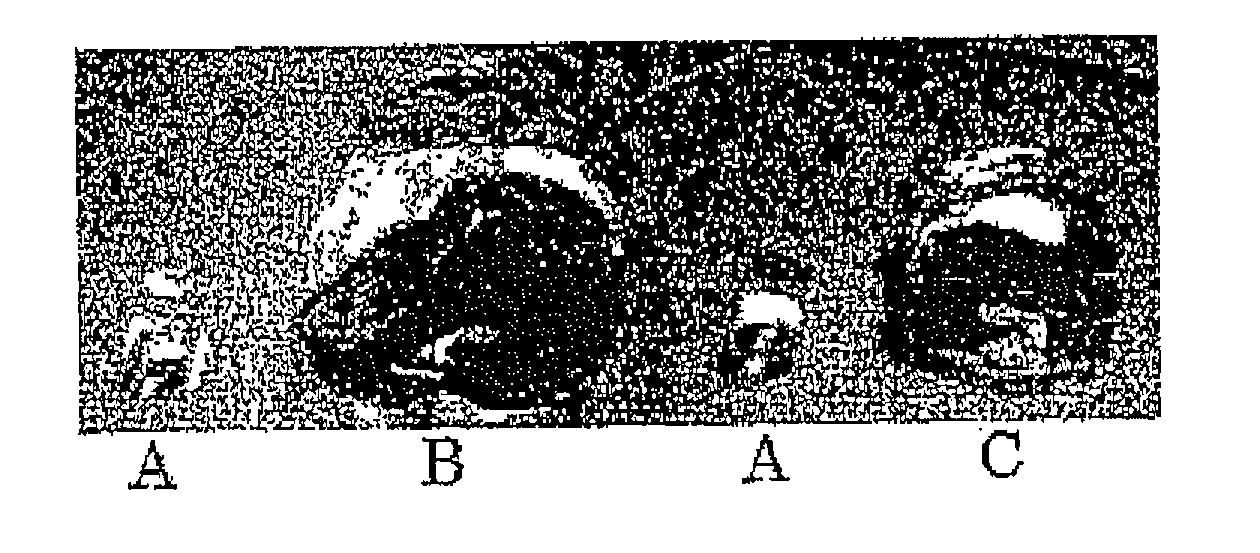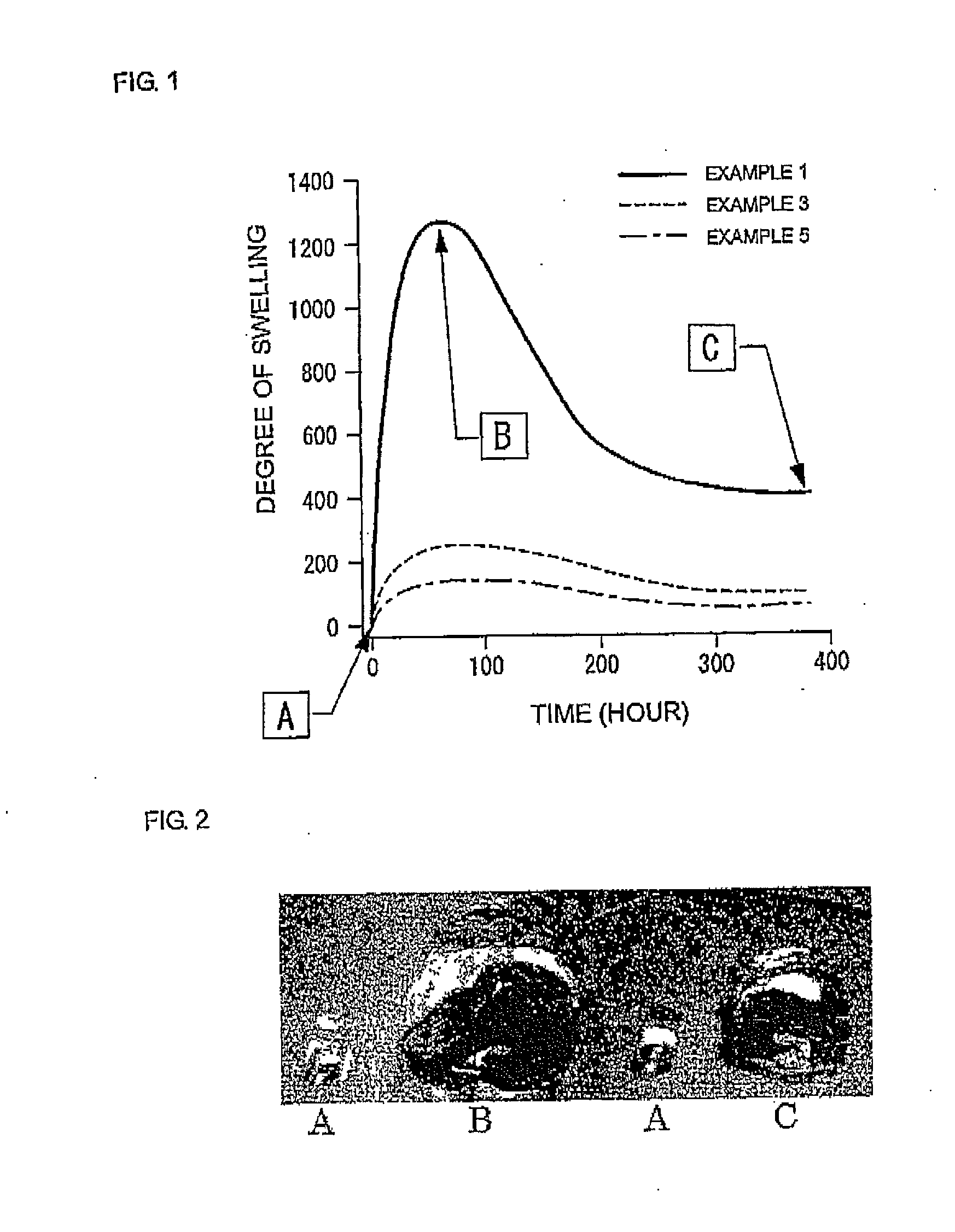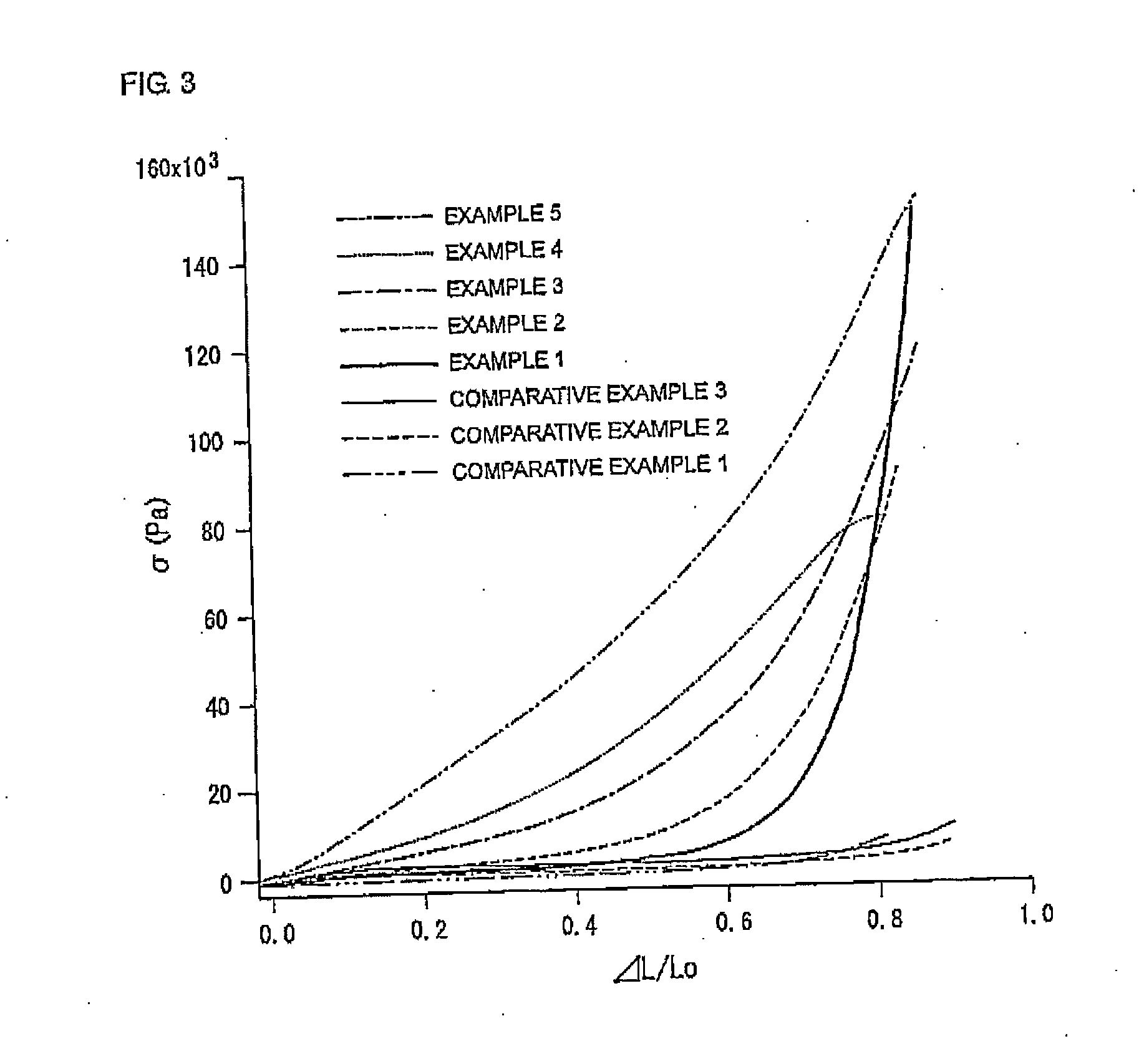Hydrogel-forming composition and hydrogel produced from the same
a technology of hydrogel and composition, which is applied in the field of hydrogel, can solve problems such as mechanical brittleness, and achieve the effect of satisfactory strength and excellent mechanical properties
- Summary
- Abstract
- Description
- Claims
- Application Information
AI Technical Summary
Benefits of technology
Problems solved by technology
Method used
Image
Examples
example 1
Production of LAPONITE RD 5% by Weight / ASAP 1% by Weight / TSPP 0.5% by Weight Hydrogel
[0083]0.021 g of sodium diphosphate decahydrate (sodium pyrophosphate decahydrate) (TSPP) (manufactured by Kanto Chemical Industry Co., Ltd.) and 2.328 g of water were mixed and the resultant mixture was stirred with a magnetic stirrer at room temperature (about 20° C.) until the mixture became a homogeneous TSPP aqueous solution. Then, while the TSPP aqueous solution was stirred with a magnetic stirrer, to the TSPP aqueous solution, 0.126 g of LAPONITE RD (manufactured by Rockwood Additives Limited) was added little by little and the resultant mixture was stirred at room temperature (about 20° C.) until the mixture became a homogeneous aqueous dispersion. Then, to the resultant aqueous dispersion, 0.026 g of sodium polyacrylate (ASAP) (manufactured by Wako Pure Chemical Industries, Ltd.; degree of polymerization: 22,000 to 70,000, viscosity of a 2 g / L aqueous solution thereof at 30° C.: 350 to 560 ...
example 2 to example 5
Production of LAPONITE RD 7.5% by Weight to 15% by Weight / ASAP 1% by Weight / TSPP 0.5% by Weight Hydrogels
[0085]By the same operation as in Example 1, a hydrogel which contains LAPONITE RD at each concentration listed in Table 1 was produced.
TABLE 1LAPONITE RDconcentrationASAP concentrationTSPP concentrationExample[% by weight][% by weight][% by weight]1510.527.510.531010.5412.510.551510.5
example 6
Production of LAPONITE RD 10% by Weight / ASAP 0.25% by Weight / TSPP 0.5% by Weight Hydrogel
[0086]0.017 g of sodium diphosphate decahydrate (sodium pyrophosphate decahydrate) (TSPP) (manufactured by Kanto Chemical Industry Co., Ltd.) and 1.772 g of water were mixed and the resultant mixture was stirred with a magnetic stirrer at room temperature (about 20° C.) until the mixture became a homogeneous TSPP aqueous solution. Then, while the TSPP aqueous solution was stirred with a magnetic stirrer, to the TSPP aqueous solution, 0.200 g of LAPONITE RD (manufactured by Rockwood Additives Limited) was added little by little and the resultant mixture was stirred at room temperature (about 20° C.) until the mixture became a homogeneous aqueous dispersion. Then, to the resultant aqueous dispersion, 0.005 g of sodium polyacrylate (ASAP) (manufactured by Wako Pure Chemical Industries, Ltd.; degree of polymerization: 22,000 to 70,000, viscosity of a 2 g / L aqueous solution thereof at 30° C.: 350 to ...
PUM
| Property | Measurement | Unit |
|---|---|---|
| diameter | aaaaa | aaaaa |
| boiling point | aaaaa | aaaaa |
| boiling point | aaaaa | aaaaa |
Abstract
Description
Claims
Application Information
 Login to view more
Login to view more - R&D Engineer
- R&D Manager
- IP Professional
- Industry Leading Data Capabilities
- Powerful AI technology
- Patent DNA Extraction
Browse by: Latest US Patents, China's latest patents, Technical Efficacy Thesaurus, Application Domain, Technology Topic.
© 2024 PatSnap. All rights reserved.Legal|Privacy policy|Modern Slavery Act Transparency Statement|Sitemap



